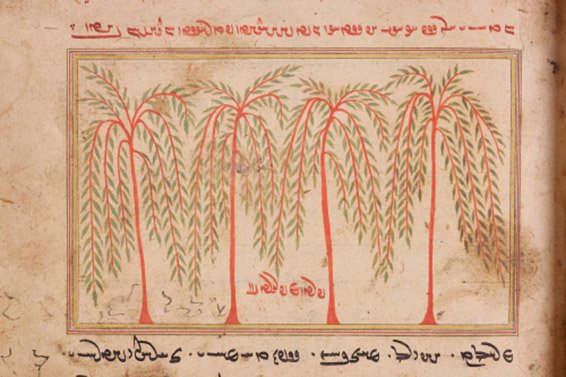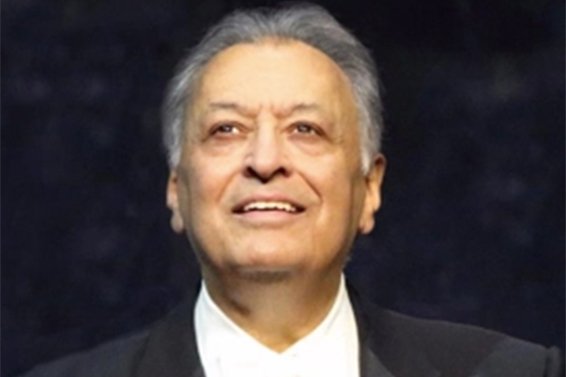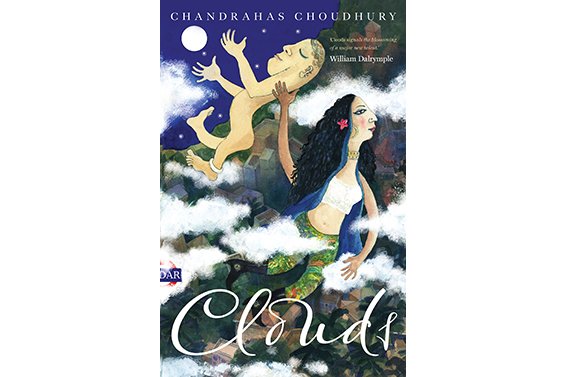Digital Zoroastrian at the British Library
The British Library is fortunate in having an unparalled collection of over 100 Zoroastrian works ranging from the oldest, the ninth century Ashem Vohu prayer written in Sogdian script discovered by Aurel Stein in Central Asia in 1907, to, most recently, manuscripts collected especially for the Royal Society in London during the late-nineteenth century. Although Zoroastrianism is Iranian in origin, most of our manuscripts in fact come from India. They are written in Avestan (Old Iranian), Middle Persian, New Persian, and also in the Indian languages Sanskrit and Gujarati.
In the past few years several of our manuscripts have become familiar through exhibitions such as Everlasting Flame: Zoroastrianism in History and Imagination held at SOAS (2013) and New Delhi (2016) and also through the Zoroastrian articles and collection items included in our recent website Discovering Sacred Texts. Building on this and thanks to the philanthropic support of Mrs Purviz Rusy Shroff, we have now been able to complete digitisation of the whole collection. This introductory post outlines the history of the collection and is intended as the first in a series highlighting the collection as the manuscripts go live during the next few months.
One of the holiest Zoroastrian prayers, the Ashem vohu, discovered at Dunhuang by Aurel Stein in 1907. Transcribed into Sogdian (a medieval Iranian language) script, this fragment dates from around the ninth century AD, about four centuries earlier than any other surviving Zoroastrian text (BL Or.8212/84). Public domain
The collection is made up of three main collections described below, dating from the seventeenth, the eighteenth and the nineteenth centuries, in addition to individual items acquired by British travellers to India and employees of the East India Company. I’ll be writing more about these individual collections in future posts.
Thomas Hyde (1636–1703)
Our oldest collection, and the earliest to reach the West, was acquired for the seventeenth century polymath Thomas Hyde. Hyde became Laudian Professor of Arabic at the University of Oxford in 1691 and Regius Professor of Hebrew in 1697 and also served as Royal Secretary and Translator of Oriental Languages for three successive monarchs: Charles II, James II and William III. While he had never travelled in the East himself, he built up a network of travellers and East India Company officials whom he asked to purchase books and manuscripts on his behalf. Several of these were chaplains whom Hyde had personally recommended to the Levant and the East India trading companies. After his death in 1703 part of his collection was purchased by Queen Anne for the Royal Library. It was subsequently given to the British Museum by King George III in 1757.
A copy of the Khordah Avesta (‘Little Avesta’) which contains prayers, hymns and invocations. This manuscript begins with the Ashem vohu (featured also in Sogdian script above) and is dated 30 Ardibihisht 1042 in the era of Yazdagird (1673). It was copied at the request of the English Agent Kunvarji Nanabhai Modi probably on commission for Hyde. Hyde could read though never wholly understood Avestan, but he used this particular manuscript as a model for the special Avestan type he created for his well-known History of the Persian Religion published in 1700 (BL Royal Ms 16.B.vi, f. 1r). Public domain
Samuel Guise (1751-1811)
Samuel Guise began his career as a Surgeon on the Bombay Establishment of the East-India Company in 1775 and from 1788 until the end of 1795, he was Head Surgeon at the East-India Company’s Factory in Surat where his work brought him into close contact with the Parsi community. An avid collector, he acquired altogether more than 400 manuscripts while in India. At some point he was fortunate enough to be able to purchase from his widow, the collection of the famous Dastur Darab who had taught the first translator of the Avesta, Anquetil du Perron, between 1758 and 1760 (Guise, Catalogue, 1800, pp. 3-4):
This Collection was made at Surat, from the year 1788 till the End of 1795, with great Trouble and Expence. … Of this Collection, however rich in Arabick and Persian works of Merit, the chief Value consists in the numerous Zend and Pehlavi MSS treating of the antient Religion and History of the Parsees, or Disciples of the celebrated Zoroaster, many of which were purchased, at a very considerable Expence, from the Widow of Darab, who had been, in the Study of those Languages, the Preceptor of M. Anquetil du Perron; and some of the Manuscripts are such as this inquisitive Frenchman found it impossible to procure
In 1796 he retired to Montrose, Angus, where he lived until his death in 1811. The story of his collection and what subsequently happened to it is told in my article “The strange story of Samuel Guise: an 18th-century collection of Zorostrian manuscripts,” but eventually in 1812, 26 Zoroastrian manuscripts were acquired at auction by the East India Company Library. They include one of the oldest surviving Avestan manuscripts, the Pahlavi Videvdad (‘Law to drive away the demons’), a legal work concerned with ritual and purity which was copied in 1323 AD (Mss Avestan 4). Other important manuscripts are a copy of the liturgical text, the Videvdad sādah (Mss Avestan 1), attributed to the fifteenth century, and one of the oldest copies of the Yasna sādah – the simple text of the Yasna ritual without any commentary– (Mss Avestan 17).
Verses 6-7
of Yasna 43 on the creation of the universe. The red floral decorations are verse dividers and are a feature of this manuscript. This copy was completed in India in 1556 (BL Mss Avestan 17, f. 128r). Public domain
Burjorji Sorabji Ashburner
Burjorji Ashburner was a successful Bombay merchant, a Freemason, and a member of the Bombay Asiatic Society. He was also a member of the Committee of Management for one of the most important Zoroastrian libraries in Bombay, the Mulla Firuz Library and made a special point of having copies made of some of the rarer items. In April 1864 Burjurji wrote offering some 70 to 80 volumes as a gift to the Royal Society, London, promising to add additional ones:
In the course of antiquarian researches…with special reference to the Parsee religion, I have had the good fortune to obtain some valuable ancient manuscripts in Zend, Pehlui, and Persian. I do not wish to keep to myself what may be useful in the literary world.
His collection consisted of standard Arabic and Persian works in addition to nineteen specifically Zoroastrian manuscripts in Persian, Avestan and Pahlavi. A number of Bujorji’s manuscripts came originally from Iran. The oldest is an illustrated copy of the Videvdad sādah (RSPA 230) which was copied in Yazd, Iran, in 1647. Whereas Zoroastrian manuscripts are generally unillustrated except for small devices such as verse dividers and occasional diagrams, this one, exceptionally, contains seven coloured drawings of trees, used as chapter headings not unlike Islamic manuscripts of the same period.
The beginning of chapter 19 of the Videvdad sadah in which Zoroaster repels an attempt on his life by the demon Buiti, sent by the evil spirit Angra Mainyu. Note the elongated calligraphic script which is typical of the older manuscripts from Iran (BL RSPA 230, f. 227r). Public domain
Several of Bujorji’s manuscripts were copied or written by Siyavakhsh Urmazdyar an Iranian poet and writer living in Bombay in the mid-nineteenth century. His poetical name was Azari, but he was otherwise known as Sarfahkar Kirmani or Irani. These include works in Persian on the calendar (the subject of a major controversy at the time), a dictionary, treatises on divination and the interaction between Zoroastrians and Muslims, in addition to copies of Avestan texts.
Other sources
The remaining manuscripts were acquired in India, mostly by East India Company servants Jonathan Duncan Governor of Bombay (1756–1811), Sir John Malcolm (1769–1833), and the Scottish linguist and poet John Leyden (1775-1811). They range from the sixteenth to the nineteenth centuries.
The beginning of the Qissah-i Sanjan, the traditional story in Persian verse of the settlement of the Parsis in India composed by Bahman ibn Kayqubād at Nausari in AD 1600. This copy is undated but was written, most probably for John Leyden, on paper watermarked 1799 (BL IO Islamic 2572, f. 1v). Public domain
Further reading
Samuel Guise, A Catalogue and Detailed Account of a Very Valuable and Curious Collection of Manuscripts, Collected in Hindostan. London, 1800.
Almut Hintze, An introduction to Zoroastrianism, in Discovering Sacred Texts, British Library 2019.
Jenny Rose, Zoroastrianism from the early modern period, in Discovering Sacred Texts, British Library 2019.
Ursula Sims-Williams, Zoroastrianism in late antiquity, in Discovering Sacred Texts, British Library 2019.
—————-, “The strange story of Samuel Guise: an 18th-century collection of Zorostrian manuscripts,” Bulletin of the Asia Institute 19, 2005 (2009), pp. 199-209.
—————-, “Zoroastrian Manuscripts in the British Library, London,” in The Transmission of the Avesta, ed. A. Cantera. Wiesbaden, 2012, pp. 173-94.
We are grateful to Mrs Purviz Rusy Shroff, Mr Neville Shroff and Mr Zarir Cama for their generous support towards this project.





